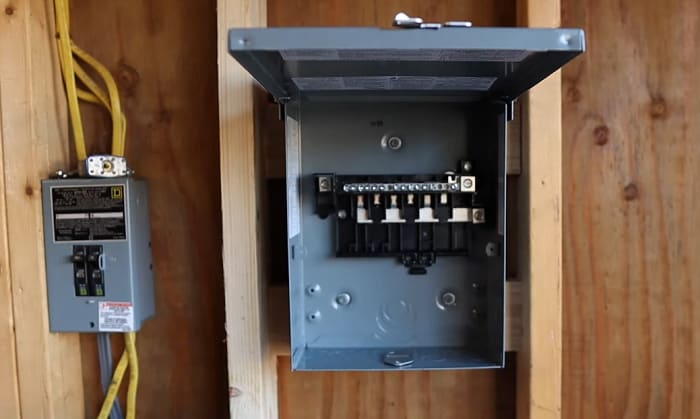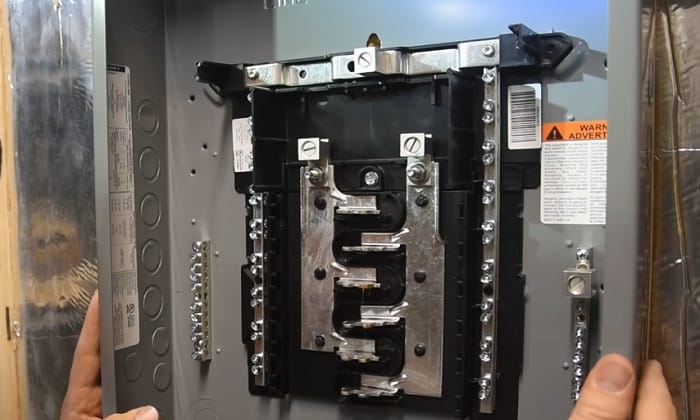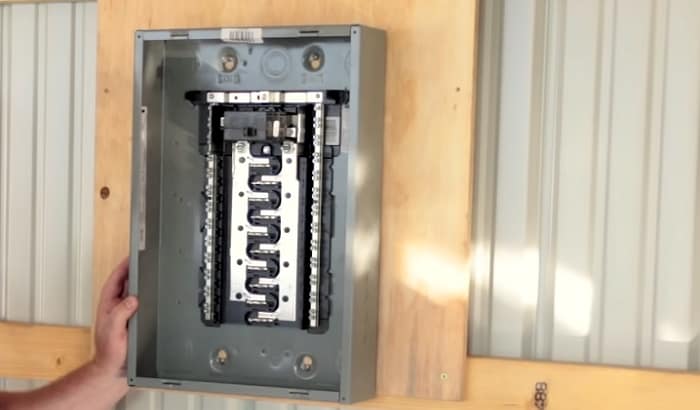A 50-amp sub panel typically has two extra spaces for branch circuits. However, this cannot be the basis for the breaker quantity you can install.
There is a proper computation method for determining how many breakers in a 50 amp sub panel are allowed. The information here will assist you in understanding the branch circuit allotment.
The Number of Breakers in a 50 Amp Sub Panel
A sub-panel is great for adding an electrical connection to a separate room, such as a shed or detached garage. We mostly use it when we need additional circuits and the main panel is full.
Usually, when you purchase any sub panel box, such as a 50 amp breaker panel, the manufacturer states how many branch circuits it has and the number of circuits allowed.
However, even though you are allowed to max out the spaces, you are only allowed to use the total rating of your breaker panel.
For example, appliances on circuits above 50 amps or higher may overload the panel. So, calculate the amount of power you use and compare it to the rating of your breaker box.
Below are the basic calculations of the electrical loads you might have in a room.
Wattage Calculation
By calculating the wattage of appliances, you can determine how many branch circuits you need and the rating of your sub panel.
Suppose you want to install a subpanel in a shed, kitchen, or any room where you might need to extend the power supply.
In this case, you’ll have to allocate 1,500 watts for low-power circuits, such as lighting and small appliances.
Furthermore, you’ll likely need a dedicated circuit for high-powered appliances such as a clothes dryer with a 5,000 watts rating.
Combine the watts of all devices, then:
- Multiply the result by 1 if you have fewer than four devices
- Otherwise, multiply by 0.75
Suppose you have 1,500 watts for lighting, 1,500 watts for standard 120V outlets, and 5,000 watts for a clothes dryer. In this scenario, you have a total of 8,000 watts for three circuits.
- The solution for this is to use a 15- to 20- amp breaker for the 120V lighting circuit and the same rating for the 120V standard outlet. At the same time, you can use 20 to 50-amp breakers for a circuit with 240V.
- To determine the size of the subpanel’s feeder breaker, converting the total value of 8,000 watts to amps is needed. Divide 8000W by 240V, and you will get a total of 33.3 amps.
- In addition to this calculation, you might need to multiply the total amps with a 125% safety factor to ensure smooth operation.
As a result, you will get 41.6 amps, which may allow you to use a 50 amp breaker double pole as the main feeder in your panel.
- However, if you want to consider future circuit expansion, you should add 20% additional amperage: 41.6 x 120% = 49.92. Although you can still use a 50-amp panel in this scenario, it may be better to use a 60 amp one instead.
Note: Installing a sub panel is dependent on whether your main panel can handle additional circuits. If you frequently use your 100-amp mains to its maximum capacity, upgrade it to a 200 or 150 amp panel first to support the sub panel you plan to install.
FAQs
How Many Amps Can a 50 Amp Panel Handle?
Practically speaking, a 50 amp panel and 50 amp breaker handle 50 amps of load without failing.
However, a 50-amp breaker lowe’s (or that of any other retailer) should not operate at its maximum load all the time. We have the 80% rule for sizing breakers for a reason.
What Size Wire Do I Need for a 50 Amp Sub Panel?
A 6-gauge wire is the recommended size for wiring a 50 amp sub panel. However, some factors must be considered when finding the circuit’s proper cable.
There are some instances where you need to use a larger wire for a 50 amp 2 pole breaker feeder. An example is when you route the cable more than 100 feet away from your main panel. Upsizing to 4 AWG accounts for voltage drops in this scenario.
Can You Run a 100 Amp Sub Panel Off a 50 Amp Breaker?
You should not run a 100 amp panel using a 50-amp main breaker, since this setup will subject the latter to a circuit overload. Whenever you use more than 50 amps, the breaker will trip.
You should put a 50 amp breaker in a 50 amp sub panel.
Read more: How big of a subpanel can you install off a 100 amp service?
Conclusion
If you know how to calculate the loads of your circuits, figuring out how many breakers in a 50 amp sub panel is simple. The actual loads are what matter, not just the slot number for the circuit breakers.
Always remember that choosing the highest rating you are permitted to install is good, especially if you use a lot of electricity. Instead of a 50 or 40 amp sub panel, you may use a higher-rated one for adding more circuits in the future

I am Edwin Jones, in charge of designing content for Galvinpower. I aspire to use my experiences in marketing to create reliable and necessary information to help our readers. It has been fun to work with Andrew and apply his incredible knowledge to our content.



